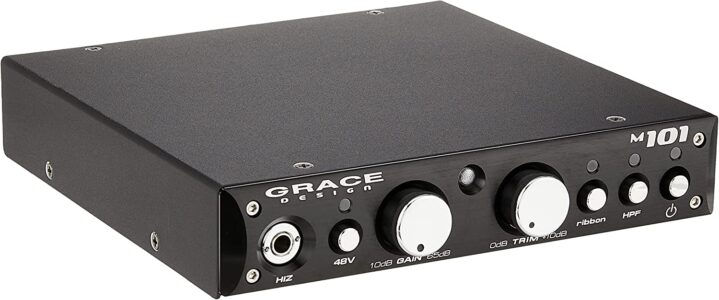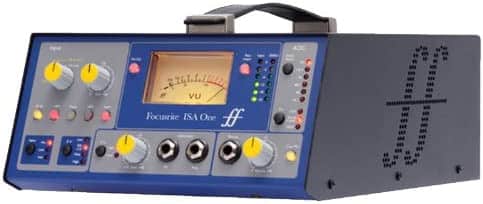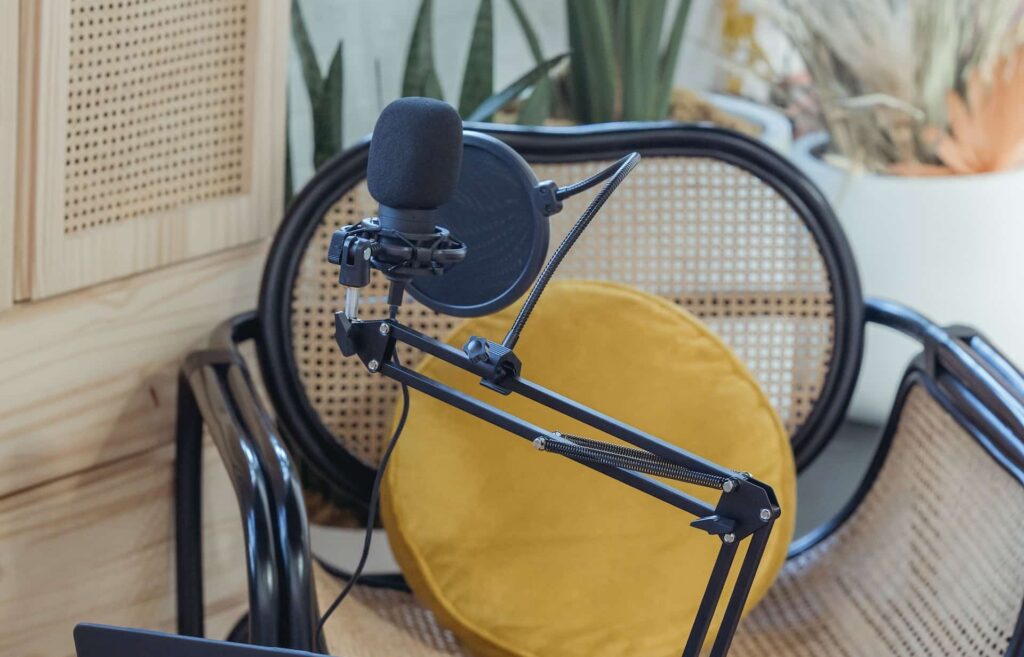Sound Quality and Character
One of the most critical factors to consider when selecting a microphone preamp is the sound quality and character it imparts on your recordings. Different preamps offer distinct sonic characteristics, ranging from warm and colored to transparent and clean.
| Sound Character |
Description |
Preamp Examples |
| Warm & Colored |
Add unique tone, warmth, or depth to recordings |
Neve 1073, Universal Audio 610 |
| Transparent & Clean |
Provide accuracy, precision, and capture subtle details |
Grace Design m101 |
Consider your recording needs and preferences when deciding on your preamp’s sound quality and character. If you’re unsure, opting for a versatile preamp like the API 512c, which offers a balance between transparency and coloration, might be the best choice.
Gain Range and Headroom
A microphone preamp’s gain range and headroom are crucial factors that can significantly impact your recording quality. A preamp with a wide gain range allows you to accommodate various microphones and recording situations, ensuring optimal performance in any setting. A preamp with high headroom ensures that your signal remains clean and distortion-free, even at high gain levels, which is particularly important when recording dynamic sources such as drums and percussion.
| Gain Range |
Description |
Importance |
| Wide |
Accommodates various microphones and recording situations |
Ensures optimal performance |
| High Headroom |
Maintains clean, distortion-free signal at high gain levels |
Prevents unwanted distortion or clipping |
When evaluating a preamp, consider its gain range and headroom to ensure that it can handle your recording needs without introducing unwanted distortion or clipping. With its impressive headroom, preamps like the API 512c are well-suited for handling a wide range of recording applications without compromising signal quality.
Input Impedance and Connectivity
Input impedance and connectivity are essential factors to consider when selecting a microphone preamp. A preamp with variable input impedance, like the Universal Audio 610 or Focusrite ISA One, allows you to optimize its performance for various microphones, ensuring the best possible sound quality. Additionally, the preamp’s type and number of inputs and outputs can impact its versatility and compatibility with your existing recording setup.
| Input Type |
Description |
Example Preamps |
| Variable Input Impedance |
Optimizes performance for various microphones |
Universal Audio 610, Focusrite ISA One |
| Fixed Input Impedance |
Works with a specific range of microphones |
API 512c, Grace Design m101 |
Ensure that the preamp you choose offers the necessary input and output options for your needs, including XLR, 1/4-inch, or digital connections. Some preamps, like the Focusrite ISA One, also provide a dedicated DI input for recording instruments directly and an optional digital output card for integrating with digital recording systems, adding to their overall versatility.
Form Factor and Portability
A microphone preamp’s form factor and portability can play a significant role in your decision-making process, especially if you require a mobile recording setup or have limited space in your studio. Preamps come in various form factors, from standalone units to 500-series modules and rack-mountable devices.
| Form Factor |
Description |
Example Preamps |
| Standalone |
Compact, portable, and often feature a single channel |
Grace Design m101, Focusrite ISA One |
| 500-Series |
Modular design, fits into a 500-series rack |
API 512c |
| Rack-mountable |
Designed for mounting in a standard 19-inch rack |
Neve 1073, Universal Audio 610 |
Consider your studio space and recording needs when selecting a preamp with the appropriate form factor. If portability is a priority, a standalone unit like the Grace Design m101 or Focusrite ISA One may be the best choice. A rack-mountable unit like the Neve 1073 or Universal Audio 610 or a 500-series module like the API 512c could be more suitable for a more permanent studio setup.
Budget Considerations
As with any gear investment, your budget will significantly determine the best microphone preamp for your needs. Preamps can range from affordable, entry-level options to high-end units with premium components and build quality.
| Price Range |
Description |
Example Preamps |
| Budget-friendly |
Offers excellent performance at a lower price point |
Grace Design m101, Focusrite ISA One |
| High-end |
Delivers exceptional sound quality and performance at a premium price |
Neve 1073, Universal Audio 610, API 512c |
It’s essential to strike a balance between the features and performance you require and the amount you’re willing to spend. Budget-friendly preamps, like the Grace Design m101 or Focusrite ISA One, still offer excellent sound quality and performance, making them a great choice for those looking to invest in a quality preamp without breaking the bank. However, if you’re willing to spend more, high-end options like the Neve 1073 or Universal Audio 610 can deliver exceptional sound quality and performance that’s hard to match.
When setting your budget, keep in mind that investing in a quality preamp can significantly enhance your recording quality, making it a worthwhile investment for any recording setup.


















































